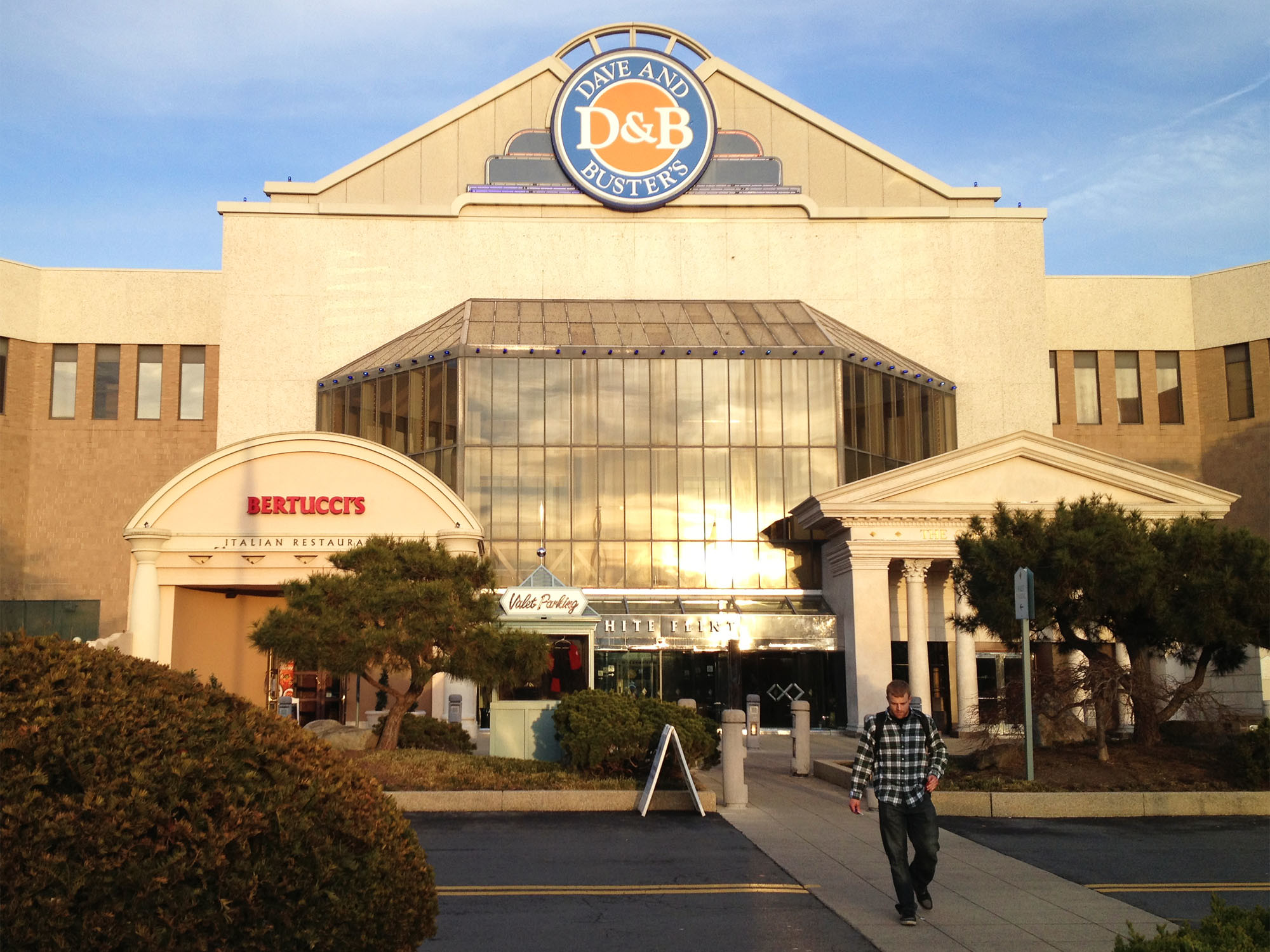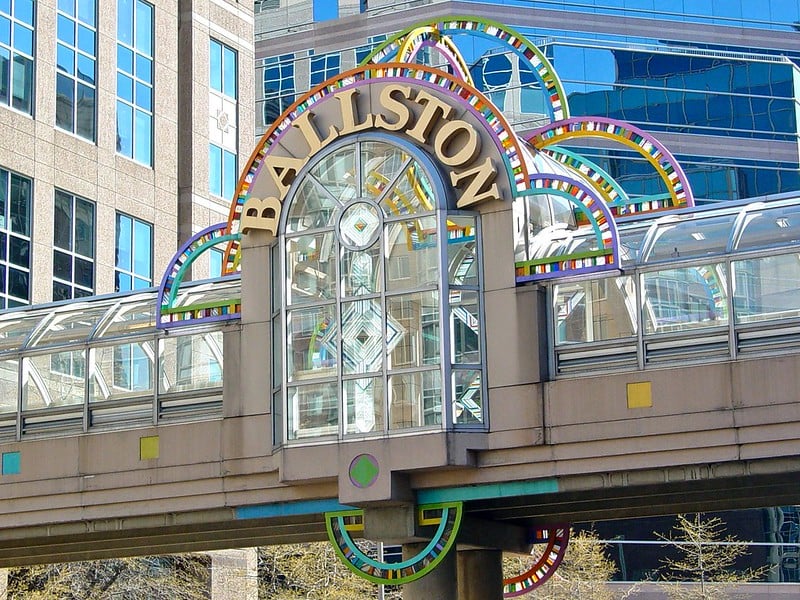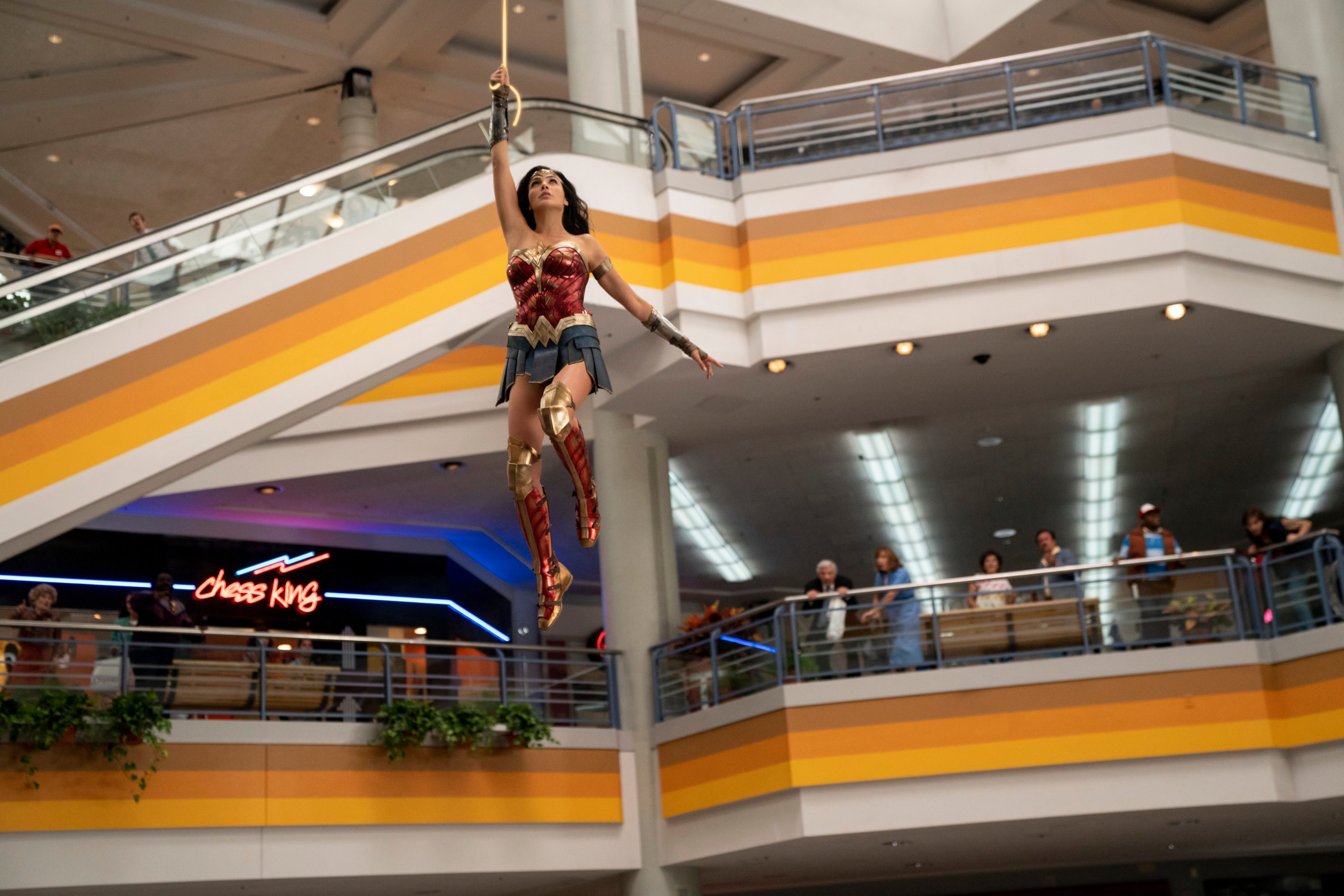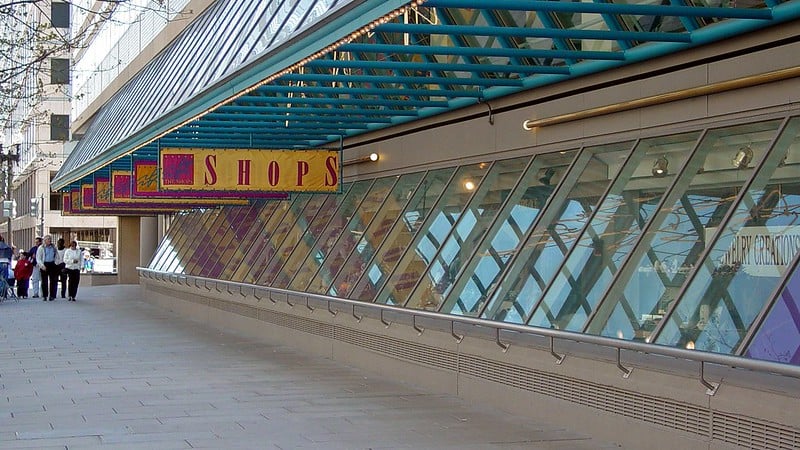Even before e-commerce and online shopping gained traction among American consumers during the pandemic, many shopping malls and department stores were dying. Retail analytics firm Coresight Research estimates that 25 percent of malls in the US will close within five years. Some malls and shopping centers in large cities and wealthy suburbs are experiencing a comeback, but many of the malls around Washington have followed less happy timelines—since 2012, nearly half of the malls around DC have closed.
Here are five shopping malls around DC that didn’t survive the retail apocalypse.
Mazza Gallerie
Mazza Gallerie in Friendship Heights is one of DC’s last malls and the latest to go out of business. Developer Tishman Speyer announced on Tuesday that it had acquired Mazza Gallerie and will convert the partly abandoned retail center into apartments while keeping some of the retail space and underground parking garage intact. Opened in 1977, Mazza Gallerie was once a shopping and dining hot spot for Washingtonians but eventually lost many of its major tenants, such as the AMC Mazza Gallerie movie theaters and Neiman Marcus.

White Flint Mall
When it opened in 1977, White Flint Mall was a rarity in the Maryland suburbs. Dotted with luxury department stores such as I. Magnin and Bloomingdale’s, White Flint was a place where shoppers could feel a sophisticated vibe without making the trip into the District. However, like many shopping malls after the 2008 recession, the number of stores at White Flint kept dwindling until the mall was permanently closed and demolished in 2015. The original site of White Flint was on the short list to become the location of Amazon’s HQ2 before the company chose Crystal City in 2018. Now, the owners have plans to develop the land into office buildings, retail space, apartments, and a hotel.

Ballston Common Mall
The mall now known as Ballston Quarter has gone through many transformations in its lifetime. It made its debut as the Parkington Shopping Center in 1951. Parkington was one of the first major suburban shopping centers in the region, as well as the largest shopping mall on the East Coast at the time of its opening. After finally being renovated in 1986, Parkington became Ballston Common Mall and eventually the home to the Kettler Capitals Iceplex (now the MedStar Capitals Iceplex), where the Washington Capitals practice their backhand shots and saucer passes. After many of its business closed for renovations between 2016 and 2019, Ballston Common reopened as Ballston Quarter and is now home to a variety of dining, shopping, and entertainment options.

Landmark Mall
Landmark Mall may be familiar to you if you watched Wonder Woman 1984. The mall, which had closed by the time the movie filmed, was prominently featured as a thriving Reagan-era shopping center. At its prime in the late ’60s and ’70s, Landmark Mall was the center of the retail industry in Alexandria. But in 1982, an electrical fire presaged the mall’s decline, which marched forward despite years of renovations. It finally closed in 2017. The mall is currently set to be redeveloped into a new Inova Alexandria Hospital.

The Shops at National Place
Opened in 1984, the Shops at National Place was a big, splashy shopping mall intended by then-DC mayor Marion Barry to help make downtown DC a retail and social hub. But while downtown has flourished since, the Shops struggled to survive the 2008 recession and closed down. However, the mall’s food court, Eat at National Place, stayed opened until 2020. The mall is now abandoned.
Correction: A previous version of this article stated that Mazza Gallerie was opened in 1979, instead of 1977.














